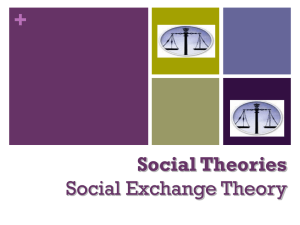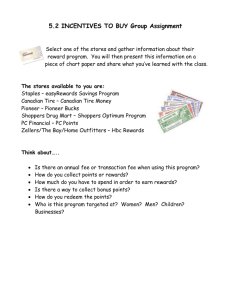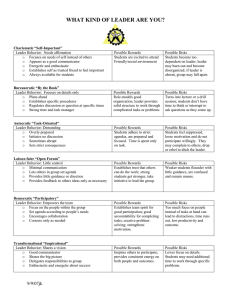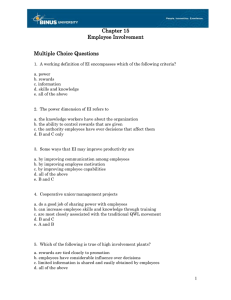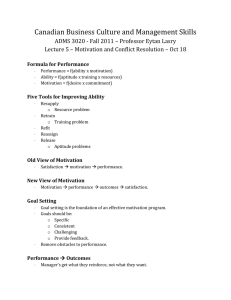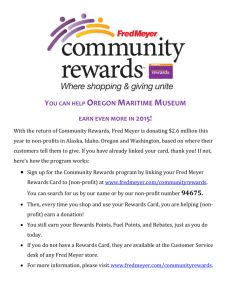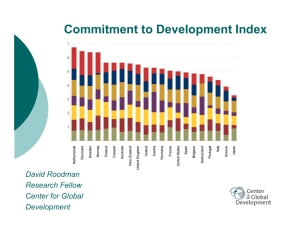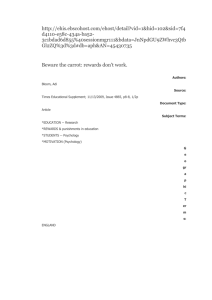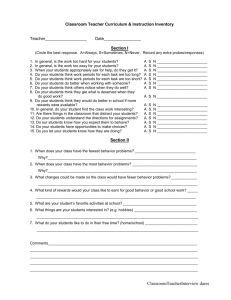Ed Hess Professor and Batten Executive-in
advertisement
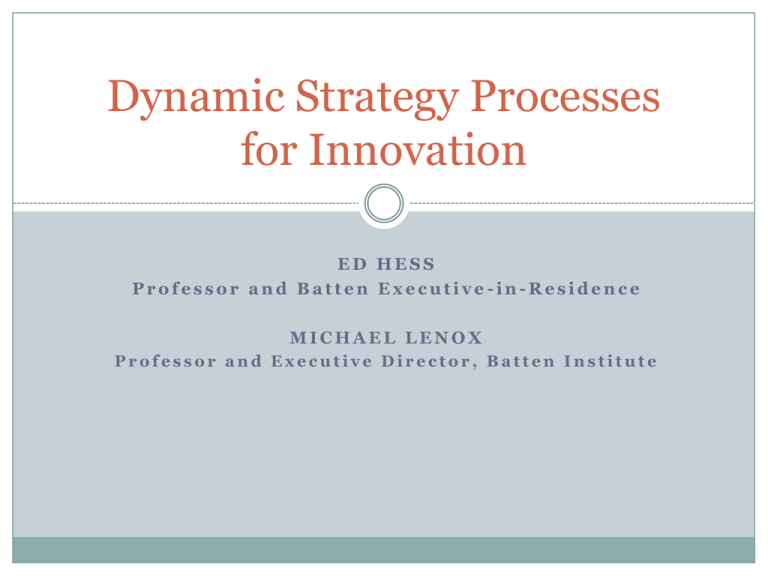
Dynamic Strategy Processes for Innovation ED HESS Professor and Batten Executive-in-Residence MICHAEL LENOX Professor and Executive Director, Batten Institute The Research Hourglass What drives innovation and growth? How does one create and manage a growth strategy? Change is the new constant… Globalization Technology Hypercompetition Demise of Sustainable Competitive Advantage Shorter Product Lifecycles Secrecy and Surprise is Difficult First Mover Advantage Temporary Velocity of Change Is Increasing Yet, the current approach to Strategy Making is static Historically, strategic analysis has been static: Driven by 5 Forces, Competencies, BCG 2 X 2 Driven by Porter’s 2 Basic Business Models Historically, a Top-Down Process Traditional strategy tools were created in a less dynamic business environment New knowledge has emerged about growth & innovation In last 10 years, research has highlighted that growth and innovation are dynamic processes: Growth results from experimental learning and requires the right kind of internal environment and processes Growth is an iterative process that requires adaptation, constant evaluation of new inputs and learning with frequent review of resource allocations Classical economic models do not adequately model growth: Biology & complexity theory better model growth & innovation Schumpeter and behavioral revolution in economics Growth demands a new approach to Strategy Making! • Modernized for this high velocity hypercompetitive global business environment • Recognizing the dynamic, learning process that underlies growth and innovation The Emerging Darden School of Thought Venkat’s work on entrepreneurial ecosystems Saras Sarasvathy’s work on effectuation Jeanne Liedtka’s work on growth leaders Michael Lenox’s work on open innovation and dynamic competitive models Raul Chao’s work on innovation portfolios Ed Hess’ work on growth systems and processes Our Dynamic Strategy Model The Competitive Lifecycle DISRUPTION GROWTH Innovation Capability Assessment Develop Commercialize Scale Improve Culture Culture Culture Culture Structure Structure Structure Structure Processes Processes Processes Processes People People People People Leadership Leadership Leadership Leadership Measurements Measurements Measurements Measurements Rewards Rewards Rewards Rewards Unique Sustainable Inimitable Growth Initiatives Portfolio Long-Term Short-Term Bottom-Line B Top-Line A F


